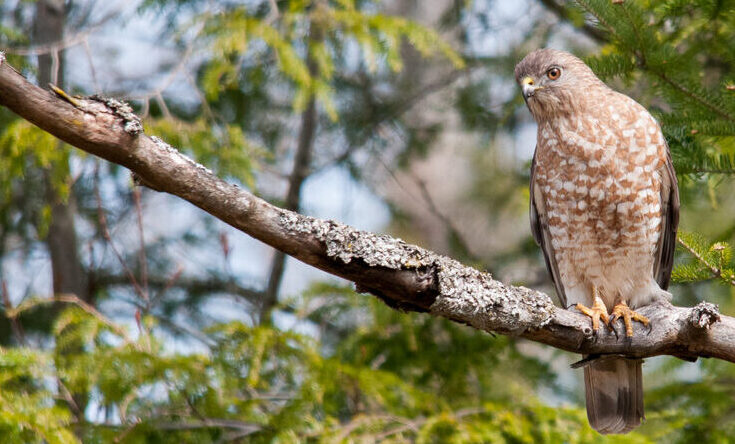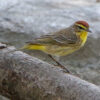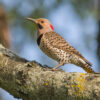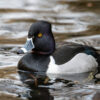Broad-winged Hawk, Buteo platypterus
Bill Rowe
One of the major spectacles that American birders watch for, or even travel to see, is the migration of the Broad-winged Hawk. This small buteo is a summertime inhabitant of mature forests across much of Canada and the eastern United States, moderately common but not always easy to find and study in its leafy woodlands. In fall, however, they suddenly become conspicuous, migrating en masse along hills and ridges and across bodies of water, gathering in flocks as they take advantage of warm air pockets that buoy them up and speed them on their way. These flocks, called “kettles,” will often number in the dozens or even hundreds of birds as they wheel around, then peel off and coast down the slope of the air pocket they were riding. This occurs over a broad front throughout the eastern U.S., but the birds may be especially abundant at certain favored points such as Hawk Mountain, PA, Hawk Ridge at Duluth, MN, and, most remarkable, Hazel Bazemore Park in Corpus Christi, TX, where busy counters have sometimes recorded over 100,000 Broad-wings in a day in late September and early October. Along with these come many other raptors, usually following schedules that are not so tight as that of the Broad-wings, which are headed entirely south of the border to winter in Middle and South America (a few of them make an exception for south Florida). On the return journey, in spring, they may still arrive in flocks but not in the masses of autumn.
IDENTIFICATION: Broad-wings are about the size of a crow, and thus smaller than Red-tails and Red-shoulders, our other common buteos. When they soar, their ample wings are shaped somewhat like a pointed arch or candle flame at the tips, and are pale underneath—mostly white with black margins, on adults, and all whitish or buff on juveniles. In binoculars, adults show a bold tail pattern, with wide black and white bands (typically just one central white band is visible), while the tails of juveniles are pale brown with many narrow dark bands. When perched, the adult has reddish-brown barring on the breast, where the juvenile has vertical brown streaking on a white background. There is also a dark form, or “morph,” with a black body and wing linings, that has been seen only a handful of times in Missouri.
ST. LOUIS STATUS: An uncommon breeding species, occupying mature woodlands in state parks, conservation areas, and private land. On migration, can be seen in numbers up to hundreds, mostly in a fairly narrow window from mid-September through the first week of October. Look for a cluster of chunky, medium-sized hawks making tight circles up in the sky: those are Broad-wings. And if you think you see one in late fall or winter, document it carefully with photos; there is no valid record beyond October.
Learn more and listen to the calls of Broad-winged Hawks here.
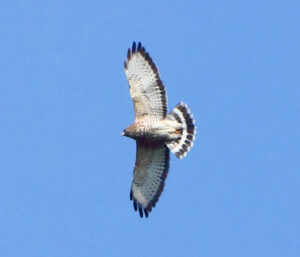
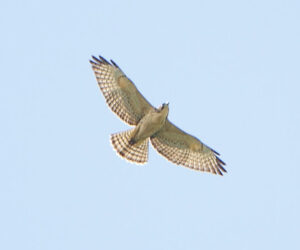
Adult in flight
Photo Credit: Al Smith
Juvenile in flight
Photo Credit: Al Smith
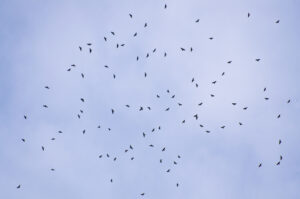
Everybody look up!

